Late winter is the time when the gardener in each of us starts to get restless. We start frantically searching for things we can do on the sporadic warmer days in hopes that spring will come just a little bit sooner this year.
At the same time, we are secretly enjoying the winter time of rest, healing, and renewal. There is something innate inside of us that is programmed to enter into a season of rest, but even in these times, we dream of fruitfulness and abundance. We long for the days we can go barefoot outside again and feel the grass between our toes. We anticipate the coming growing season and make countless garden layout sketches to satiate ourselves.
So, as we each do what we can to embrace the late winter time of rest and healing, here is a list of activities you can do to keep your green thumbs happy until the crocus start to bloom and the soil wakes from its slumber.
For USDA Growing Zones 9-11, CLICK HERE.
Here are just a few things you can add to your February Gardening To-Do List.
In the Garden & Greenhouse
- Continue cover the soil with organic matter. This time of year, I use a lot of straw, specifically the stuff that comes out of the chicken coop or duck house. Then, over the next month, I will start adding a 3″ layer of wood chips to the top. Just make sure to keep compost and wood chips away from woody stems (The goal is to have donut shapes not volcanos around the stem / trunk).
- Remove any remaining dead plant matter from last year from the annual garden. Tomato wilt and fungal diseases can stay in the soil, if it doesn’t get cold enough over the winter. Add to compost pile or burn if you experienced plant diseases.
- Do controlled burns on new garden areas. Check areas again after it rains / snows to see if you have burned it down far enough or need to do it one more time.
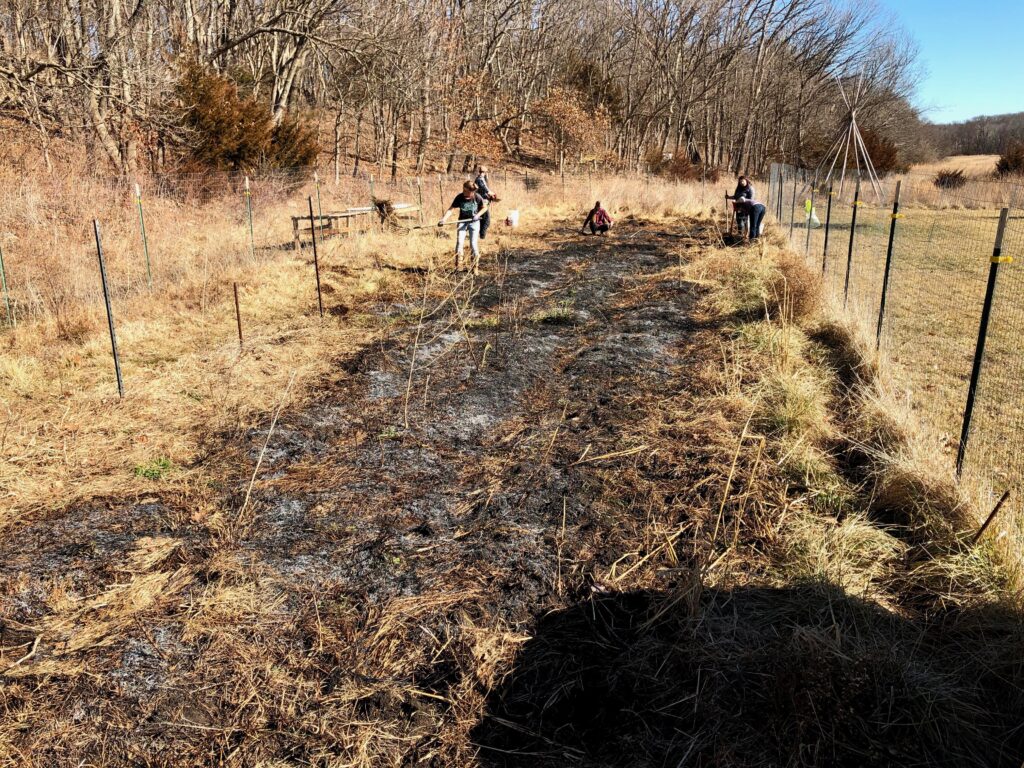
- Turn the compost pile every few weeks to keep things decomposing over the winter. Add an occasional bucket of water to keep moisture levels up, especially if there are a lot of leaves in the pile.
- Plant brassicas (early in the month): cauliflower, broccoli, cabbage, etc. These can be planted in the green house mid-month OR indoors in seed trays.
- Plant a few night shades (later in the month): tomatoes, peppers, and egg plants. Use heat mats, grow lights, etc. This will keep the seedlings from getting too leggy over the next two months. If you do not use supplemental heat / lighting, you might want to wait until early March to start indoors.
- Apply winter soil probiotic and microbial spray (I use a product called BioAg, which is produced in Kansas City, MO).
- Start ordering seeds and root stock.
- Brainstorm garden plan ideas and draw them out, so you are ready once the growing season starts.
- Consider using new companion plants this year and rotating your usual crop layout.
In the Food Forest
- Prune all fruit and nut trees, shrubs, and bushes. Open and airy scaffold structure is best to promote fruiting.
- Prepare to start tapping for maple syrup. Get your hooks and spouts ready, check the sugar drip lines (if you have a tube harvesting system). The best time for tapping is usually mid-February through mid-March.
- Remove all rotten or hard fruit (still on the trees) and put in the compost pile.
- Make bone sauce for deer repellant (recipe coming soon) and apply “spots” on the warmer days. This bone sauce recipe will actually keep deer away from orchard trees for 10+ years.
- Pack the snow around the base of tree trunks to pack down vole and rodent tunnels.
- Order organic orchard supplies for the coming season – be sure to look for holiday sales! Include seaweed extract, BioAg, neem oil, and fish emulsion. Get ready for spring foliar spraying.
- Finish any winter mulching (wait for compost until spring, so you don’t add nitrogen right now).
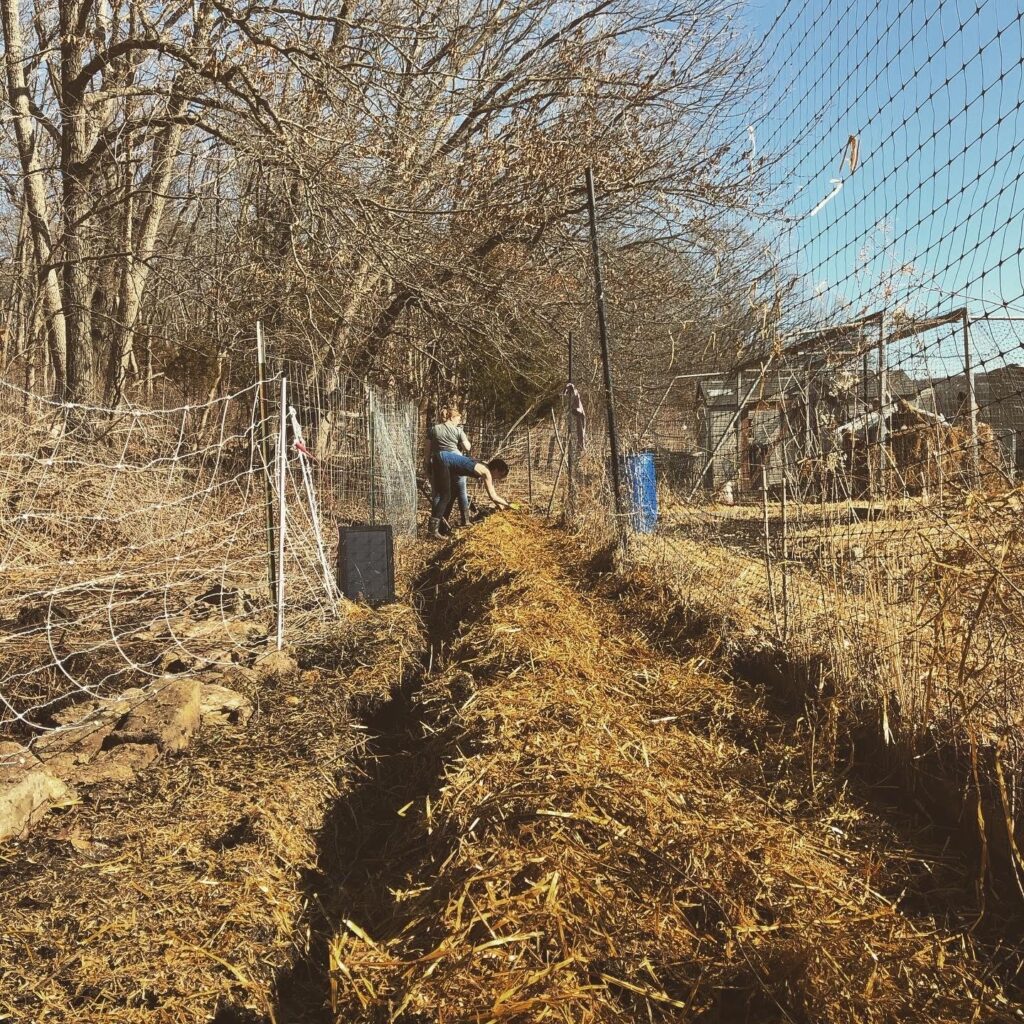
In the Shed
- Check mouse traps frequently. Add cotton balls with peppermint oil to deter rodents. This time of year it is common for mice to start having babies, especially in the greenhouse.
- TIP: Make a tool oiling bucket by filling it with sand and adding a pint or two of oil. You can use old motor oil from your car or even olive olive. Put shovels and spades in this to remove rust and keep oiled.
- Look for estate sales that might have garden tools. The best tools are often the old wooden handled ones – skip the new ones. Most of the time, they are overpriced and not made with the quality standard they used to be.
In the Chicken Coop
- Feed extra protein (meal worms, black oiled sunflower seeds, bugs, etc.) to help them during their own recovery season.
- Do NOT let a hen go broody yet. Wait until the end of February. The weather fluctuates too much this time of year and that can make it a hard hatch for your girls.
- Consider hatching eggs indoors in an incubator. Use a reputable company for ordering OR use your own fertilized eggs. Collect hatching eggs and store in the refrigerator for up to 36 hours before putting in the incubator.
- Do NOT use supplemental lighting to increase egg production. Chickens need this off season to let their bodies rest. Let them have a natural rhythm of rest too.
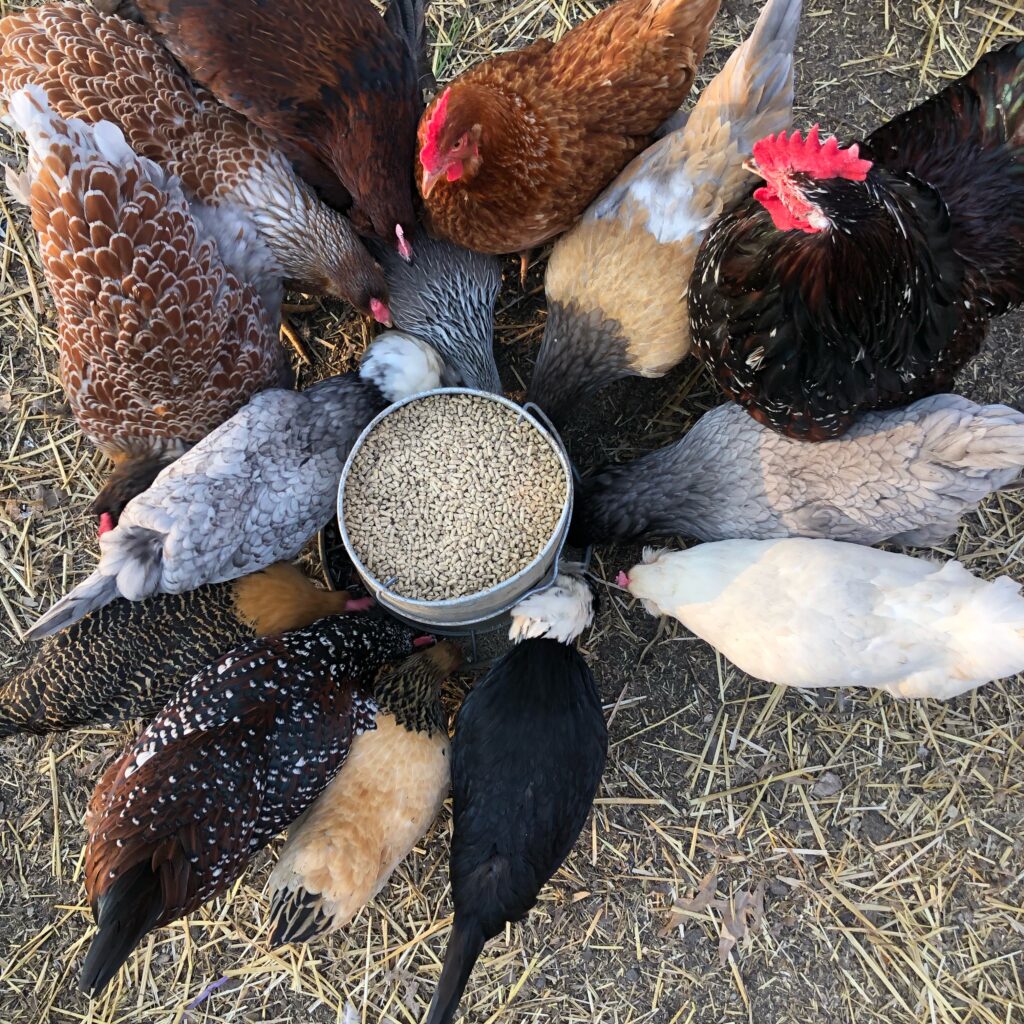
- Add a small amount of corn or millet to their diet to help with caloric intake in the winter months. This helps keep them warm naturally. NEVER use heat lamps in a coop or run.
- Purchase suet blocks (>5% protein) as you see them on sale. The fat content helps birds stay warm for the winter. (click here for more tips on keeping birds warm)
- Rotate straw and bedding in the coop to keep things clean and sanitary.
- Keep water unthawed
- Use an electric water heater (OR)
- Use two watering containers and bring them in at night / rotate them
- Note: The salt water bottle in the container does NOT work outside of 1-2 degrees below freezing and only for a short time. This can work as an addition, but should not be your primary means of keeping water unthawed.
- Give healthy protein / omega 3 treats: One cheep way to do this is to go to a local pet store and get feeder fish (cheep minnows). Put them into a shallow tray (with a bit of water) and watch the birds catch them! You can also purchase live crickets from pet stores and feel them fresh veggies for a day or two. Feed several per day to your birds for a healthy winter treat.
- GOATS: If you have goats, you can feed them your used Christmas trees for an extra boost of vitamin C and antioxidants.
Around the House & Perennial Beds
- Start planning your online orders for barefoot perennial flowers. Consider a company like Hartmann’s where you can order in bulk at a much cheeper price.
- Winter seed new wild flower beds. If you have an edge area in your yard, this could be the perfect solution for that area. Plus, the less you need to mow, the better! Use a company like Prairie Moon Nursery to order native perennial seed mixes specific to your site needs.
- Dig new swales and cover with straw or winter wheat seed to prepare for spring gardens.
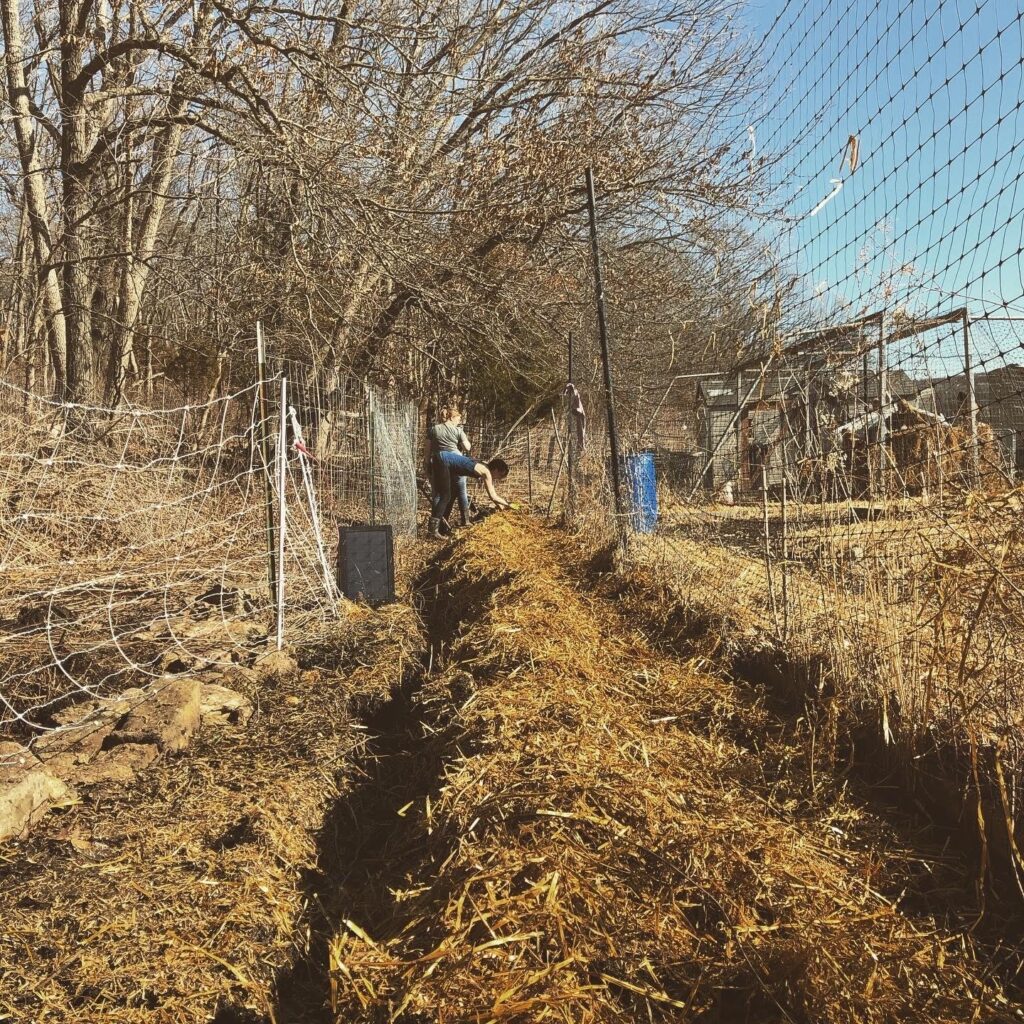
- Water house plants carefully and start adding a 1/2 dose of nitrogen fertilizer (starting the last week of the month). If you have a fresh water fish tank, you can also use that water when you do water changes. It’s rich in nutrients and fish poo.
- Only water them when you can put your finger in the soil and it feels dry up to your first knuckle (about 1″ deep). If the soil feels or looks damp – do NOT water.
- Water in the sink until water runs out of the bottom, so you know the full root ball is saturated. Let it drain for a few minutes before returning to a sunny spot near a window.
- Rotate plants every view days for even light distribution.
Winter Ideas for Kids
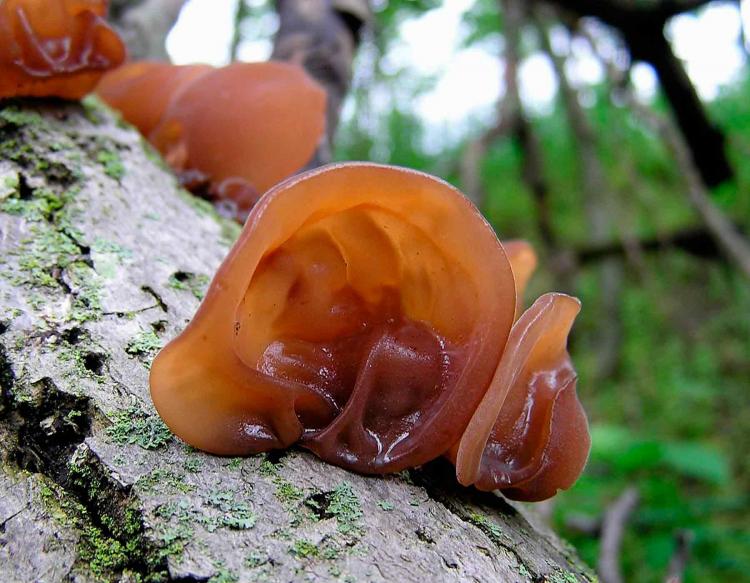
- Go on a hike and look for deer runs and fallen deer antlers.
- Look for wood ear mushrooms! They love the warmer winter days this time of year and are absolutely delicious. Not to mention, they have no “inedible” look alike, so are a safe variety for new mushroom hunters to harvest.
- Attend a local gardening, mushroom, or permaculture event in your area.
- Schedule a property consultation to get a professional plan for your property!
- Have kids help you pick out seeds for next year in the seed catalogues. Consider giving them their own section of the garden to plant in the spring. Have them cut out pictures from your seed catalogue to make a collage to inspire them to plant with you in the spring.
Join the Mailing List to receive this list in your inbox each month
If this content was helpful to you, please help inspire other gardeners by sharing the link on social media or with your favorite gardening group.

What’s included with your Patreon Membership
-
- On-going permaculture / property mentorship
-
- 1st Week of the Month LIVE Q&A
-
- 2nd Week of the Month Practical Permaculture PDF
-
- 3rd Week of the Month Permaculture Class
-
- 4th Week of the Month Mini-Classes
-
- Behind-the-scenes content
-
- Digital downloads
-
- Exclusive content
-
- Earlybird ticket pricing for in-person events
-
- Early access to all events
-
- Live event VIP
-
- Live Q&As
-
- Livestreams
-
- Video tutorials & lessons
-
- Private community
-
- Exclusive voting power
-
- Quarterly Online Classes – EXCLUSIVE
-
- Monthly Practical Permaculture PDF
NOTE: Membership offerings vary depending on the level of patron support.


One Reply to “February Gardening To-Do List for Growing Zones 3-8”
Comments are closed.